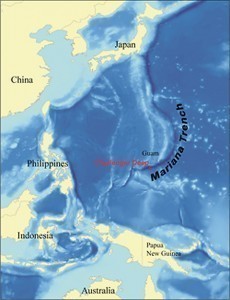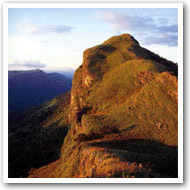How Deep is Challenger Deep?
Known as the deepest surveyed area in the oceanic  divisions, the Challenger Deep is situated at the south of the Mariana Trench. The Fais Island is the nearest land to the deep. To explore the area, there are numerous expeditions conducted. The first expedition that sounded the Challenger Deep is the HMS Challenger. The expedition was launched in December 1872 and ended in May 1876. In 1912, a book about the depth of the area was published by Sir John Murray. To learn more about the area, it is best to know the actual depth of the Challenger Deep.
divisions, the Challenger Deep is situated at the south of the Mariana Trench. The Fais Island is the nearest land to the deep. To explore the area, there are numerous expeditions conducted. The first expedition that sounded the Challenger Deep is the HMS Challenger. The expedition was launched in December 1872 and ended in May 1876. In 1912, a book about the depth of the area was published by Sir John Murray. To learn more about the area, it is best to know the actual depth of the Challenger Deep.
The Depth of the Challenger Deep
How deep is the Challenger Deep? The Challenger Deep has an estimated depth of 36,000 feet. The initial expedition in the place found that it has a depth of 31,614 feet. In 1951, another expedition was launched to survey the deepest portion of the Mariana Trench. The expedition discovered that the Challenger Deep has a depth of 35,761 feet. Another expedition was launched in 1984. At this time, the depth was measured to be 35,840 feet. Finally, on June 1, 2009, the Simrad EM120 was used to measure the depth of the trench. The RV Kilo Moana expedition spotted the Challenger Deep. The depth was measured to be 35,994 feet.
Additional Facts and Other Interesting Details
The Challenger Deep features different distinct lifeforms like sea cucumbers, scale worms as well as shrimps. Aside from these species, it plays home to polychaete worms. According to National Geographic, the Kaiko expedition in the deep found 432 species of soft shelled foraminifera. Marine species with hard shell cannot survive in this place because of the lack of calcium carbonate, which is essential to the development of calcareous shells.
The mean temperature in the deep is around 25 to 27 degrees Celsius or 85 to 86 degrees Fahrenheit. The deep was formed when the ocean crust and the continental crust crashed into each other. Since the ocean crust is heavier than the other crust, it plunged downward to the mantle, which formed the deepest point in the world.
The water in the deep is hot because of the presence of spreading tectonic plates that release hydrogen sulfide as well as other minerals. In addition to this, the highest pressure is also observed in the Challenger Deep. Due to the high pressure in the deepest point, it is possible that the lifeforms in the place will not survive in the future.





